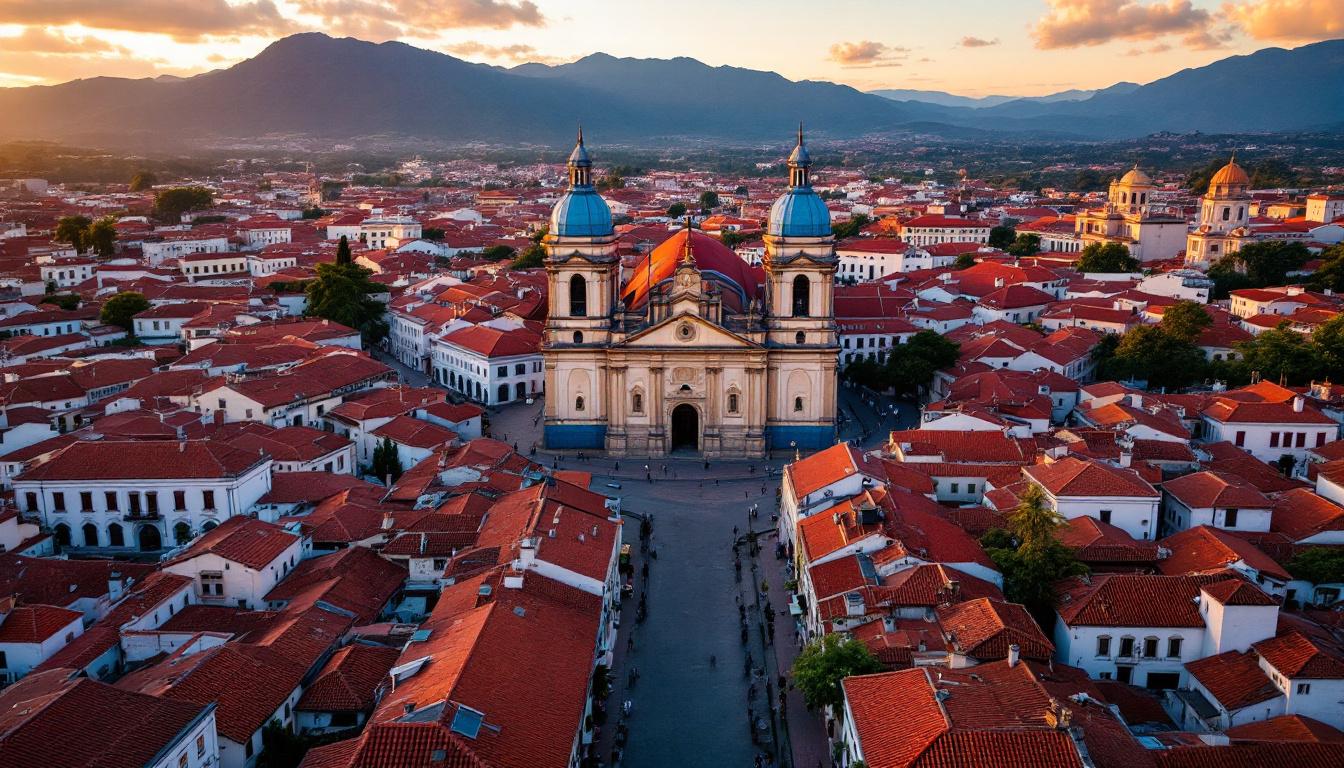While tourists crowd Cusco’s narrow streets gasping for breath at 11,152 feet, savvy travelers are discovering Ecuador’s colonial jewel at a comfortable 8,200 feet elevation. Cuenca delivers the same UNESCO World Heritage magic without the altitude headaches or tourist chaos.
This perfectly preserved colonial city offers 70% lower costs than Peru’s overcrowded alternative, with authentic experiences that mass tourism hasn’t corrupted. Here’s why Cuenca should top your South American itinerary instead of following the crowded Inca Trail.
The numbers don’t lie: while Cusco receives over 1.5 million visitors annually, Cuenca welcomes fewer than 200,000, creating space for genuine cultural encounters and unhurried exploration.
Why Cusco’s altitude ruins half your vacation
The oxygen struggle tourists don’t expect
Cusco’s extreme elevation causes acute mountain sickness in 60% of visitors within their first 24 hours. Headaches, nausea, and fatigue steal precious vacation days while your body struggles to adapt to oxygen levels 40% lower than sea level.
Cuenca’s comfortable elevation advantage
At 8,200 feet, Cuenca sits in the sweet spot where colonial architecture meets comfortable breathing. Most travelers experience zero altitude symptoms, allowing immediate exploration of cobblestone streets and hidden courtyards without medical concerns or acclimatization delays.
The staggering cost difference nobody talks about
Cusco’s tourist trap pricing explosion
Colonial boutique hotels in Cusco’s historic center command $180-350 per night, while restaurant meals average $25-40 per person. Tourist-focused establishments capitalize on Machu Picchu pilgrims with inflated pricing that destroys travel budgets quickly.
Cuenca’s incredible value proposition
Beautifully restored colonial hotels start at $45-80 nightly, featuring original tile work and garden courtyards. Traditional meals in family-run restaurants cost $8-15, with fresh trout from Andean lakes and locally grown quinoa creating memorable dining without financial stress.
Authentic culture versus commercialized tourism
How mass tourism destroyed Cusco’s soul
Cusco’s historic center transforms into a tourist theme park during peak season, with vendors aggressively hawking alpaca sweaters and restaurants serving diluted “traditional” cuisine designed for foreign palates rather than authentic Andean flavors.
Cuenca’s living cultural heritage
Indigenous Cañari artisans still practice ancestral techniques in family workshops, creating genuine Panama hats and silver filigree jewelry. Local markets serve residents first, tourists second, maintaining authentic social rhythms and traditional food preparation methods.
The UNESCO heritage nobody knows about
Ecuador’s best kept colonial secret
Cuenca earned UNESCO World Heritage status in 1999 for its exceptional colonial urban planning and architectural preservation. Unlike Cusco’s mixture of original and reconstructed buildings, Cuenca maintains 85% original colonial structures from its 1557 founding.
Three civilizations in perfect harmony
Spanish colonial facades conceal Cañari stonework foundations, while Incan engineering influences appear in street layouts and water channels. This unique three-culture fusion creates architectural complexity impossible to find elsewhere in South America.
Smart travelers choose Cuenca for its combination of authentic experiences, comfortable elevation, and budget-friendly pricing. While others struggle with altitude sickness in overcrowded Cusco, you’ll explore peaceful colonial streets with money left for artisan treasures.
Visit during August’s dry season when clear skies showcase the surrounding Andes without tourist high-season crowds. Book colonial accommodations in advance through authentic heritage properties that preserve architectural integrity while offering modern comfort.
Planning your Cuenca colonial discovery
How long does altitude adjustment take in Cuenca?
Most visitors experience zero altitude symptoms at Cuenca’s 8,200-foot elevation, allowing immediate sightseeing upon arrival. Compare this to Cusco’s 2-3 day mandatory acclimatization period.
What’s the cost difference for colonial hotels?
Cuenca’s restored colonial properties average $45-80 nightly versus Cusco’s $180-350 range. You’ll save $1,000+ weekly while enjoying equally stunning architecture and superior service.
Which city offers more authentic experiences?
Cuenca maintains living cultural traditions with local artisans, traditional markets, and family restaurants serving residents. Cusco’s historic center caters primarily to tourist expectations rather than authentic Andean culture.
How do I reach Cuenca from North America?
Fly into Quito or Guayaquil, then take a scenic 45-minute domestic flight to Cuenca. Total travel time matches Cusco routes while offering better airline schedules and competitive pricing year-round.
What’s the weather like in August?
August brings perfect dry season conditions with sunny days averaging 72°F and cool nights around 50°F. Rain is minimal, creating ideal conditions for colonial architecture photography and outdoor exploration.
